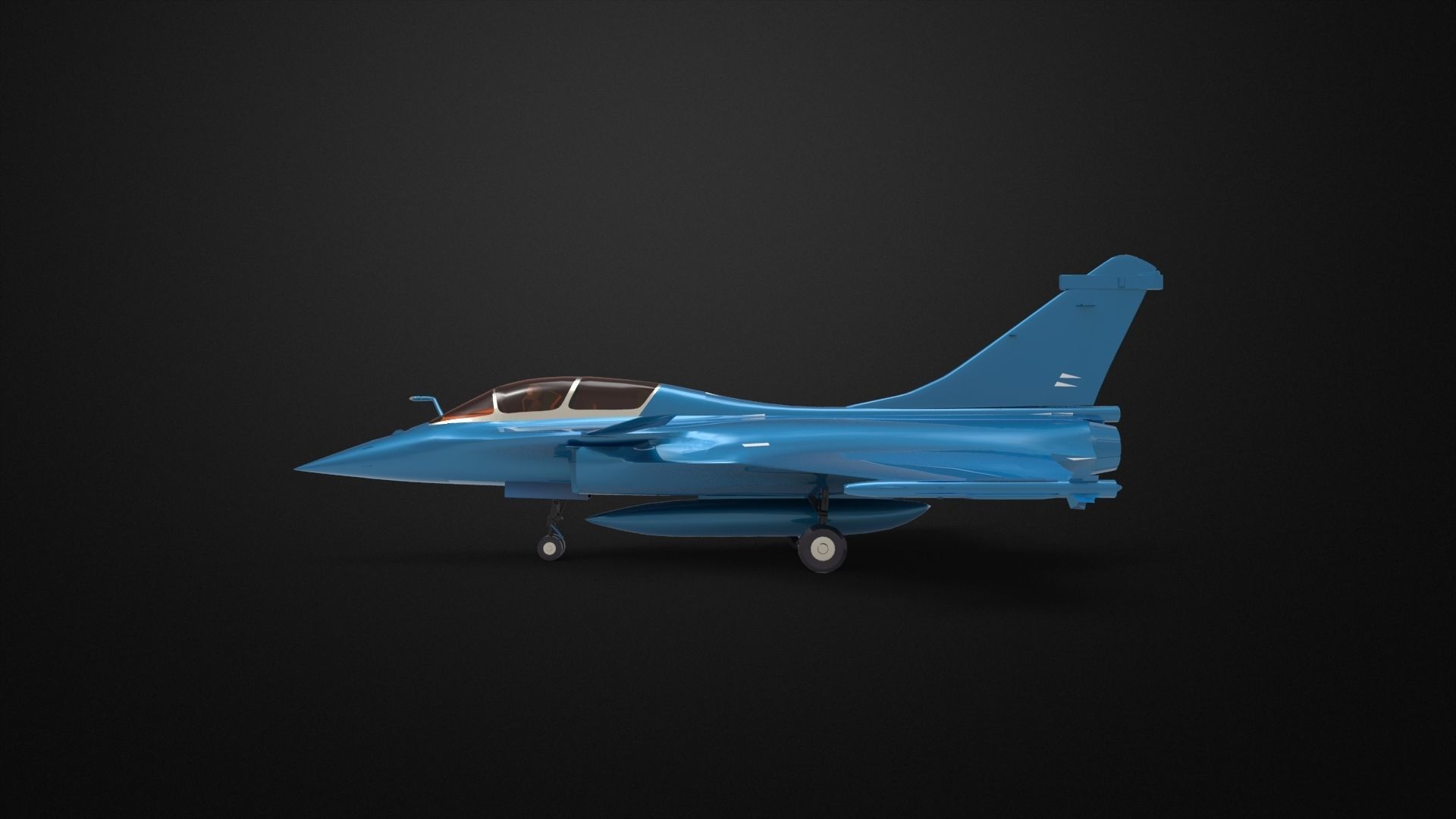
Dassault Rafale 3D model
The Dassault Rafale (French pronunciation: [ʁafal], literally meaning gust of wind,[1] and burst of fire in a more military sense)[2] is a French twin-engine, canard delta wing, multirole fighter aircraft designed and built by Dassault Aviation. Equipped with a wide range of weapons, the Rafale is intended to perform air supremacy, interdiction, aerial reconnaissance, ground support, in-depth strike, anti-ship strike and nuclear deterrence missions. The Rafale is referred to as an omnirole aircraft by Dassault.
In the late 1970s, the French Air Force and French Navy were seeking to replace and consolidate their current fleets of aircraft. In order to reduce development costs and boost prospective sales, France entered into an arrangement with the UK, Germany, Italy and Spain to produce an agile multi-purpose Future European Fighter Aircraft (which would become the Eurofighter Typhoon). Subsequent disagreements over workshare and differing requirements led to France's pursuit of its own development programme. Dassault built a technology demonstrator which first flew in July 1986 as part of an eight-year flight-test programme, paving the way for the go-ahead of the project. The Rafale is distinct from other European fighters of its era in that it is almost entirely built by one country, involving most of France's major defence contractors, such as Dassault, Thales and Safran.
Many of the aircraft's avionics and features, such as direct voice input, the RBE2 AA active electronically scanned array (AESA) radar and the optronique secteur frontal infra-red search and track (IRST) sensor, were domestically developed and produced for the Rafale programme. Originally scheduled to enter service in 1996, the Rafale suffered significant delays due to post-Cold War budget cuts and changes in priorities. The aircraft is available in three main variants: Rafale C single-seat land-based version, Rafale B twin-seat land-based version, and Rafale M single-seat carrier-based version.
Introduced in 2001, the Rafale is being produced for both the French Air Force and for carrier-based operations in the French Navy. The Rafale has been marketed for export to several countries, and was selected for purchase by the Egyptian Air Force, the Indian Air Force, the Qatar Air Force, the Hellenic Air Force, the Croatian Air Force and the United Arab Emirates Air Force. The Rafale has been used in combat over Afghanistan, Libya, Mali, Iraq and Syria.In France, the government proceeded with its own programme. The French Ministry of Defence required an aircraft capable of air-to-air and air-to-ground, all-day and adverse weather operations. Unlike other contemporary European fighter projects that required some level of international collaboration and cost-sharing, France was the sole developer of the Rafale's airframe, avionics, propulsion system and armament, and as such the aircraft was to replace a multitude of aircraft in the French Armed Forces. The Rafale would perform roles previously filled by an assortment of specialised platforms, including the Jaguar, Mirage F1C/CR/CT, Mirage 2000C/-5/N in the French Air Force, and the F-8P Crusader, Étendard IVP/M and Super Étendard in French Naval Aviation.[3][12]
During October–December 1978, prior to France's joining of the ECA, Dassault received contracts for the development of project ACT 92 (Avion de Combat Tactique, meaning Tactical Combat Airplane). The following year, the National Office for Aviation Studies and Research began studying the possible configurations of the new fighter under the codename Rapace (meaning Bird of Prey). By March 1980, the number of configurations had been narrowed down to four, two of which had a combination of canards, delta wings and a single vertical tail-fin.[5] In October 1982, the French Ministry of Defence announced that Dassault would build a technology demonstrator named Avion de Combat expérimental (Experimental Combat Airplane, ACX). France wanted to collaborate with West Germany and the UK on the project, but was prepared to build the ACX by itself. In 1984, the government decided to proceed with a combat variant of the ACX due to the conflicting technical criteria of the respective FEFA participant nations.







